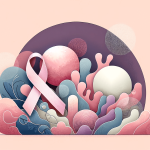This comprehensive guide delves deep into the journey of breast cancer chemotherapy, illuminating its physical, emotional, and financial impacts on patients and their families. It begins by explaining the nature of breast cancer and its subtypes, followed by an overview of chemotherapy as a key treatment. The blog addresses the array of side effects from chemotherapy, both immediate and long-term, and the crucial role of managing these effects for overall well-being. Beyond the physical challenges, it explores the emotional journey, highlighting the importance of support systems and mental health care. The financial burden of chemotherapy is also discussed, offering insights into cost management and assistance. Finally, the guide looks at life post-chemotherapy, emphasizing the importance of follow-up care, survivorship, and quality of life. This guide is an essential read for anyone touched by breast cancer, offering valuable knowledge and support for navigating this challenging path.
Breast cancer is a devastating disease that affects millions of women worldwide. Among the various treatment options available, chemotherapy plays a significant role in fighting this illness. Understanding the impact of breast cancer chemotherapy is crucial for patients and their families. In this comprehensive guide, we will explore the physical, emotional, and financial implications of undergoing chemotherapy, as well as what life holds beyond treatment.
Understanding Breast Cancer and Chemotherapy
Before delving into the impact of chemotherapy on breast cancer patients, let’s grasp the basics of the disease and its treatment. Breast cancer is a condition where abnormal cells develop in the breast tissues, leading to the formation of tumors. These tumors can be benign (non-cancerous) or malignant (cancerous). Malignant tumors have the potential to spread to other parts of the body if left untreated.
When it comes to breast cancer, there are several risk factors that can increase a person’s chances of developing the disease. These risk factors include age, family history, genetic mutations, hormonal factors, and lifestyle choices. It is important to note that while certain risk factors may increase the likelihood of developing breast cancer, they do not guarantee that a person will develop the disease.
Chemotherapy, a systemic treatment, uses drugs to destroy cancer cells throughout the body. It is often used in combination with other treatments such as surgery, radiation therapy, and targeted therapy. The goal of chemotherapy is to eliminate cancer cells that may have spread beyond the breast, reducing the risk of recurrence and improving overall survival rates.
The Basics of Breast Cancer
Within the diverse range of breast cancers, there are distinct subtypes with varying characteristics and treatment options. The most common types of breast cancer include ductal carcinoma in situ (DCIS), invasive ductal carcinoma (IDC), invasive lobular carcinoma (ILC), and inflammatory breast cancer (IBC).
DCIS is a non-invasive breast cancer where abnormal cells are confined to the milk ducts. IDC, on the other hand, is the most common type of invasive breast cancer, where abnormal cells have spread beyond the milk ducts into the surrounding breast tissue. ILC is another type of invasive breast cancer that begins in the milk-producing glands and can spread to other parts of the body. IBC is a rare and aggressive form of breast cancer that causes the breast to appear red and swollen.
Each subtype of breast cancer has its own unique characteristics, which play a crucial role in determining the most appropriate treatment approach. Factors such as tumor size, lymph node involvement, hormone receptor status, and HER2/neu status are taken into consideration when developing an individualized treatment plan.
What is Chemotherapy?
Chemotherapy uses powerful drugs to kill fast-growing cancer cells. While it can be administered before or after surgery or radiation therapy, it is often used as a primary treatment for breast cancer. The specific chemotherapy drugs and regimen will depend on the subtype and stage of breast cancer, as well as the individual’s overall health and treatment goals.
Chemotherapy drugs can be given orally or intravenously, and they work by interfering with the cancer cells’ ability to divide and grow. The drugs target not only the primary tumor but also any cancer cells that may have spread to other parts of the body. This systemic approach helps to eliminate microscopic cancer cells that may not be visible on imaging tests.
It is important to note that chemotherapy can have side effects, as the drugs can also affect normal, healthy cells in the body. Common side effects include fatigue, hair loss, nausea, vomiting, and increased susceptibility to infections. However, advancements in supportive care have significantly improved the management of these side effects, allowing patients to better tolerate and complete their chemotherapy treatment.
The Physical Impact of Chemotherapy on Breast Cancer Patients
Chemotherapy, like any treatment, comes with its own set of physical side effects. Understanding and managing these side effects can enhance the treatment experience.
Side Effects of Chemotherapy
Chemotherapy affects both cancer cells and healthy cells, leading to a range of side effects. These may include fatigue, hair loss, nausea, decreased appetite, and changes in taste. It is important to remember that side effects vary from person to person, and medical professionals can provide support to minimize their impact.
Long-Term Physical Changes
While many physical changes are temporary, some may persist beyond the completion of chemotherapy. These may include changes in fertility, cognitive function, and heart health. Regular check-ups and open communication with healthcare providers are vital for monitoring and addressing any long-term effects.
The Emotional Impact of Chemotherapy
Undergoing breast cancer chemotherapy can be an emotionally challenging journey. Acknowledging and addressing the emotional impact is essential for overall well-being.
Coping with Diagnosis and Treatment
Being diagnosed with breast cancer and starting chemotherapy treatment can be overwhelming. Connecting with support groups, seeking therapy, and allowing yourself to express your feelings can help navigate through these difficult times.
Emotional Health and Support Systems
Building a strong support network is vital during chemotherapy. Friends, family, and healthcare professionals can provide the emotional support needed to face the challenges head-on. Taking care of your mental health, engaging in stress-reducing activities, and practicing self-care can contribute to emotional well-being.
The Financial Impact of Chemotherapy
Chemotherapy treatments can have a significant financial burden on patients and their families. Understanding the costs involved and exploring financial assistance options can alleviate some of the stress associated with finances.
Cost of Chemotherapy Treatments
The cost of chemotherapy varies depending on factors such as the specific drugs used, the duration of treatment, and the healthcare setting. Health insurance coverage, financial assistance programs, and open communication with healthcare providers can help navigate the financial aspect of treatment.
Financial Planning and Assistance
Seeking financial advice and exploring available resources can provide clarity and support. Financial planners, social workers, and nonprofit organizations can offer guidance on managing medical bills, addressing insurance concerns, and accessing financial aid programs.
Life After Chemotherapy
Completing chemotherapy treatment marks a significant milestone in a breast cancer patient’s journey. Life beyond treatment brings new perspectives and challenges, which require attention and care.
Follow-Up Care and Monitoring
Regular follow-up appointments with healthcare providers are necessary to monitor any potential recurrence or long-term side effects. Additionally, maintaining a healthy lifestyle and adhering to any recommended medical strategies contribute to long-term well-being.
Survivorship and Quality of Life
Embracing survivorship and focusing on quality of life becomes the aim after chemotherapy. Engaging in activities that bring joy, seeking support from survivorship programs, and connecting with others who have had similar experiences can provide a sense of community and encouragement.
In conclusion, understanding the impact of breast cancer chemotherapy is vital for patients, their families, and their support networks. By exploring the physical, emotional, and financial aspects of chemotherapy, we can empower those battling breast cancer to navigate their treatment journey with confidence and resilience.






